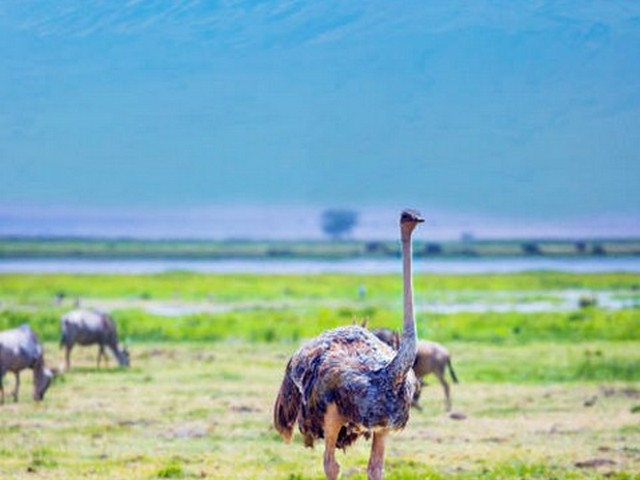Kilimanjaro Trekking Safety Guidelines: Ensuring a Safe Ascent to the Roof of Africa
Welcome to a journey like no other! At the Kilimanjaro Centre For Trekking and Ecotourism (KCTE), we understand that climbing Mount Kilimanjaro is a dream for many. As the highest peak in Africa, making your way to the summit is not just a physical endeavor but also a spiritual journey that invites you to step out of your comfort zone and embrace the majestic beauty of nature.
However, the grandeur of Kilimanjaro comes with its challenges. Safety is paramount in ensuring that your trek not only meets but exceeds your expectations. We’ve put together these Kilimanjaro Trekking Safety Guidelines to help you prepare adequately and make informed decisions as you plan your adventure with us.
Why Focus on Safety?
Trekking Kilimanjaro involves navigating different climates and terrains, from rainforests to alpine deserts to glaciers. Each zone presents unique hazards, and being prepared can dramatically enhance not only your enjoyment but also your success rate in reaching the summit. At KCTE, we prioritize your safety to ensure that every step you take on the mountain is secure and well-guided.
Preparing for Your Trek: The Basics
Health and Fitness
H2: Assess Your Physical Condition
Climbing Kilimanjaro does not require technical climbing skills, but good physical health is essential. We recommend starting a fitness regimen at least three months before your trek. Focus on cardiovascular exercises, strength training, and hiking to condition your body.
H2: Consult Your Doctor
Visit your healthcare provider to get a comprehensive check-up. Discuss your plans and ensure your vaccinations are up to date. Consider a high-altitude medication if recommended by your doctor.
Gear and Equipment
H2: Dress for Success
The right gear is crucial for your Kilimanjaro adventure. Layering is key to handle the varied temperatures. Invest in a good quality waterproof jacket, thermal layers, and breathable fabrics. Don’t forget a warm hat, gloves, and UV-protection sunglasses.
H2: Choose the Right Footwear
A sturdy pair of hiking boots is indispensable. Make sure they are well broken-in to avoid blisters.
Mental Preparation
H2: Familiarize Yourself with the Mountain
Understanding the route and what to expect each day can significantly ease your mind. At KCTE, we provide detailed briefings and support throughout your trek.
H2: Stay Positive and Flexible
Mental resilience plays a huge role in conquering Kilimanjaro. Prepare to face challenges and remember why you started this journey. Flexibility can be the key to overcoming unexpected situations.
On the Mountain: Safety Practices
Navigation and Guided Support
H2: Trust Your Guides
Our KCTE guides are experienced, trained, and deeply familiar with Kilimanjaro. They are equipped with emergency response skills and deep knowledge of high-altitude health issues. Following their lead and advice is not just recommended, it’s essential.
Health Monitoring
H2: Acclimatization and Altitude Sickness
We design our itineraries to allow for proper acclimatization, reducing the risk of altitude sickness. Recognize the symptoms such as headache, nausea, and dizziness. Inform your guide immediately if you feel unwell.
Emergency Procedures
H2: Be Informed About Rescue Operations
In case of a medical emergency, KCTE has protocols in place for immediate response, including evacuation if necessary. Knowing these procedures can provide peace of mind.
Preserving the Environment
Mount Kilimanjaro is not only a natural wonder but also a fragile ecosystem. At KCTE, we are committed to ecotourism practices that minimize environmental impact. Stick to designated paths, carry out all trash, and respect wildlife.
After Your Trek: Recovery and Reflection
Reaching the summit is exhilarating, but remember that the descent is part of your journey. Take it slow, and once you’re back, give your body time to recover. Reflect on your experience and share your story. Each trekker’s story inspires more people to respect and enjoy this magnificent mountain responsibly.
Ready to Conquer Kilimanjaro?
Feeling inspired and prepared? Book your Kilimanjaro climbing adventure with Kilimanjaro Centre For Trekking and Ecotourism (KCTE). With us, your journey to the roof of Africa will be memorable, safe, and filled with awe-inspiring moments. Visit our website to choose the right package for you and start planning today!
FAQ: Kilimanjaro Trekking Safety
Q1: What is the best time of the year to climb Kilimanjaro?
A1: The best times are during the dry seasons, from January to mid-March and from June to October.
Q2: How many days does it take to climb Kilimanjaro?
A2: It varies by route but typically ranges from 5 to 9 days, depending on how much time you take to acclimatize to the altitude.
Q3: What should I eat and drink during the trek?
A3: Drink plenty of water, and eat high-energy, digestible foods. Our meal plans are designed to maximize your energy and health.
Q4: Can I trek Kilimanjaro if I have a medical condition?
A4: Many people with controlled medical conditions can successfully trek Kilimanjaro. However, always consult with your doctor first and inform your trekking company of your condition.
Q5: Do I need travel insurance for Kilimanjaro?
A5: Yes, we highly recommend obtaining comprehensive travel insurance that covers high altitude trekking.
Thank you for considering Kilimanjaro Centre For Trekking and Ecotourism (KCTE) as your trusted partner in this adventure of a lifetime. The mountains are calling, and we are here to guide you safely to the summit and back. Let’s make your dream a reality, one safe step at a time!




